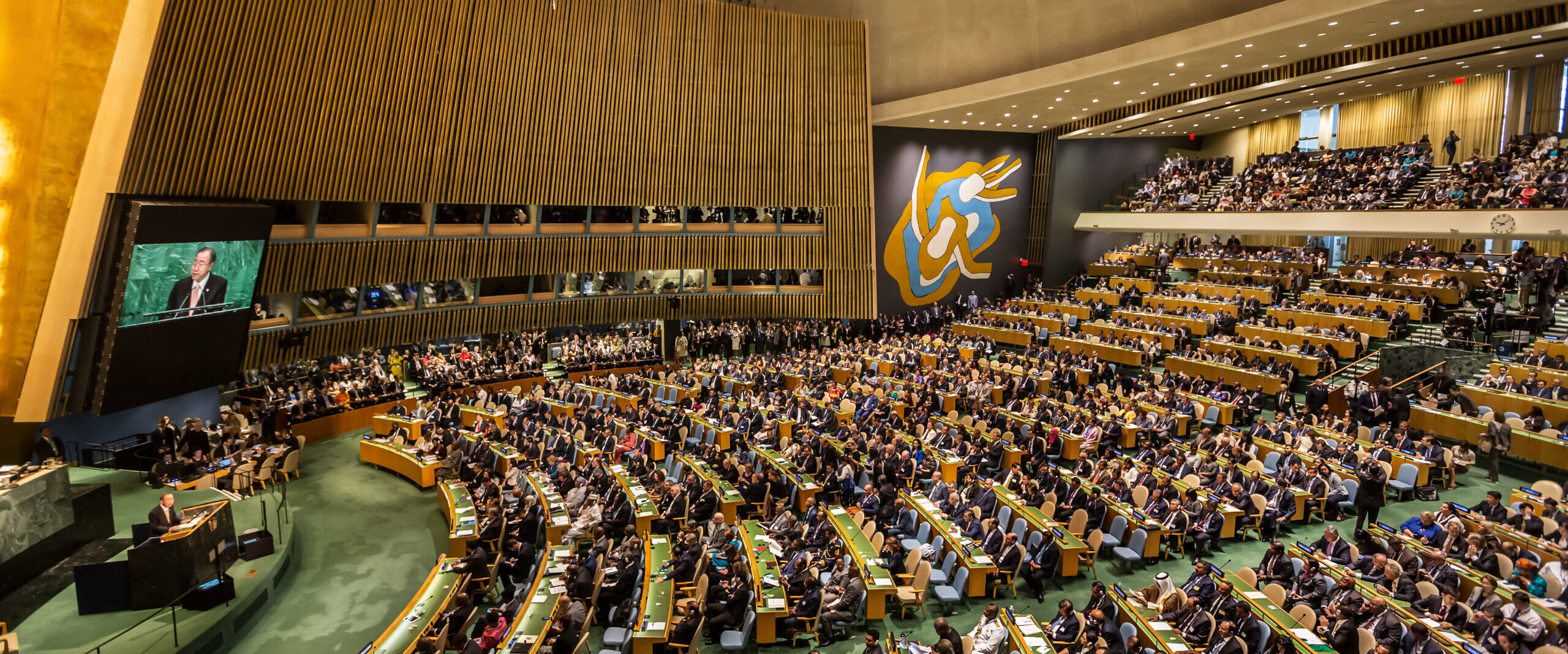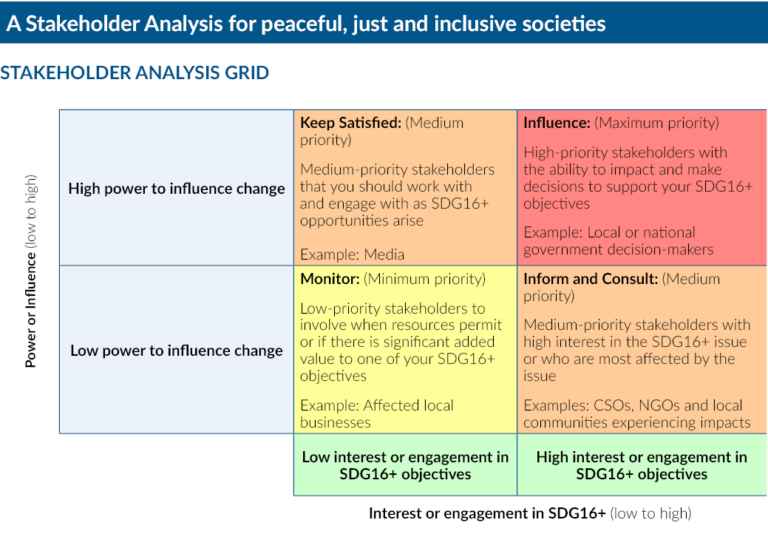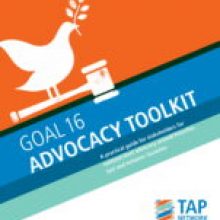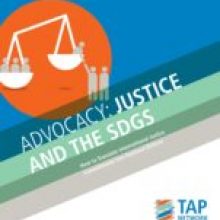Identifying SDG16+ targets and partners: A stakeholder analysis
A stakeholder analysis can help you to identify targets, champions, opponents and partners for SDG16+ engagement and assess their level of power, influence and interest to make peaceful, just and inclusive societies a reality.

A stakeholder analysis is a mapping exercise where you identify the individuals, organizations and authorities working on SDG16+ and group them according to their level of power and interest (or engagement) in SDG16+ implementation and follow-up and review. It is a useful tool for identifying stakeholder targets for SDG16+ engagement – including champions for your specific cause – as well as potential partners who may be able to support your efforts to achieve peaceful, just and inclusive societies. Mapping and evaluating stakeholders can also help you to prioritize, manage and engage with different stakeholders effectively, ensuring that your resources and efforts will be targeted towards those with the greatest influence and impact.
In carrying out a stakeholder analysis, it is important to consider a diverse range of SDG16+ stakeholders including the following:1
After identifying relevant stakeholders, you should reflect upon the importance of each one, the power they have to influence SDG16+ implementation and follow-up and review, their capacities, their needs and their current openness to engagement. The ‘Stakeholder Analysis Grid’ on the following page provides a template to help you undertake some of this analysis.
Following your analysis, you should categorize stakeholders into the following groups:

Goal 16 Advocacy Toolkit: A practical guide for stakeholders for national-level advocacy around Peaceful, Just and Inclusive Societies (TAP Network, 2016)
This toolkit provides civil society and other non-governmental stakeholders with guidance on how to engage with their governments and other local, regional or international stakeholders to support the planning, implementation, follow-up and accountability of SDG 16. It includes a short section on preparing a gap analysis. Available at: https://tapnetwork2030.org/goal-16-advocacy-toolkit/

Advocacy: Justice and the SDGs: How to Translate International Justice Commitments into National Reform (TAP Network, 2015)
This toolkit – aimed at civil society, activists and policy practitioners who are working to promote legal empowerment and access to justice – provides a step-by-step guide to creating a national justice plan. It includes sections on ‘conducting a stakeholder analysis’ as well as ‘building allies.’ Available at: https://tapnetwork2030.org/wp-content/uploads/2015/04/TAP_Advocacy_JusticeandtheSDGs.pdf

Transparency, Accountability &
Participation (TAP) Network
Address: 205 E 42nd St.
New York, NY 10017
Email:
[email protected]